Appalling state of railway tracks near Wallan revealed in shocking video
The appalling state of the railway tracks between Sydney and Melbourne have been revealed in a shocking video which shows how violently the driver’s cabin was rocked while on the track.
VIC News
Don't miss out on the headlines from VIC News. Followed categories will be added to My News.
Shocking video of a Sydney-to-Melbourne XPT train rocking violently due to faulty tracks has emerged just days after two people were killed and 11 injured further down the line.
The video details the appalling state of the infrastructure between the country’s two biggest cities, with some of the rocking so sharp it would be impossible to stand in the driver’s cabin.
Several YouTube videos are circulating from the cabin of an XPT with a narrator lamenting the state of the tracks and suggesting speeds should be lowered.
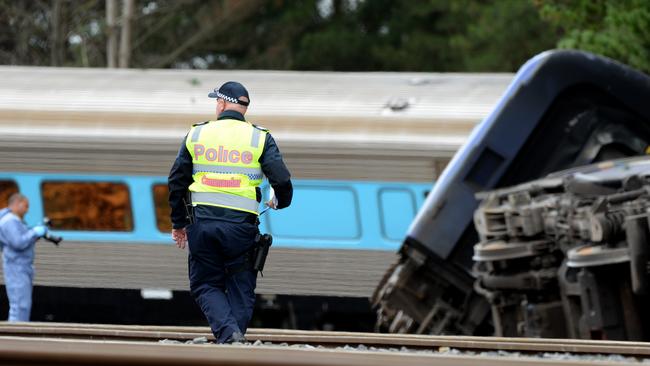
The videos, some of which were taken near Wangaratta in northeast Victoria, are on the same route as last Thursday’s rail disaster, which claimed two lives at Wallan in central Victoria.
The footage, shot in 2018 and first posted in the middle of 2019, comes amid deep concern within the Victorian and federal governments about the state of the track, which is clearly shown in the videos to be substandard in parts
“Look at that twist there, it’s really severe,” the narrator says at one point.
At another dangerous point, he says: “There’s a nasty little sharp one there too.”
There are several videos of different parts of the track, which is managed by the Australian Rail Track Corporation.
Last Thursday, the Morrison government insisted trains would not run on dangerous tracks.
Deputy Prime Minister Michael McCormack repeatedly stressed federal authorities would not allow a train to travel on unsafe track.
“I reiterate no authority would let passengers travel on unsafe track,” Mr McCormack said at the scene of the Wallan disaster.
“We will ensure that proper answers are found for the bereaved families and making sure these sorts of things don’t happen again.”
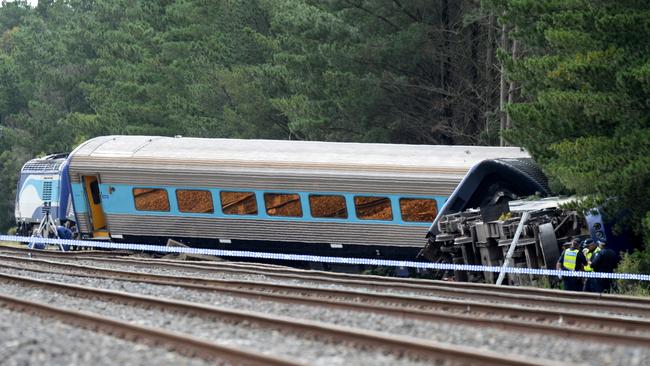
But there is growing angst in the rail community about the state of the track between Melbourne and Albury, which has for years been the subject of debate.
The government is poised to invest heavily in track upgrades but the state of the infrastructure is being linked as a potential contributing factor to the Wallan disaster.
The Australian revealed Tuesday that the actions of a train pilot before the Wallan derailment was a key focus for investigators.
The pilot, Sam Meintanis, a track protection officer with services company Programmed, was remembered on Monday night as a “popular member of our team”.
The Australian Rail Track Corporation has privately said that the pilot of the doomed Sydney-Melbourne train was told of looming dangers due to a compromised signalling system.
Sources said the ARTC had privately claimed the pilot was told about the signalling problems at Wallan, about 50km north of Melbourne, well before the train cannoned at speed into what experts claim should have been a low-speed switch of track.
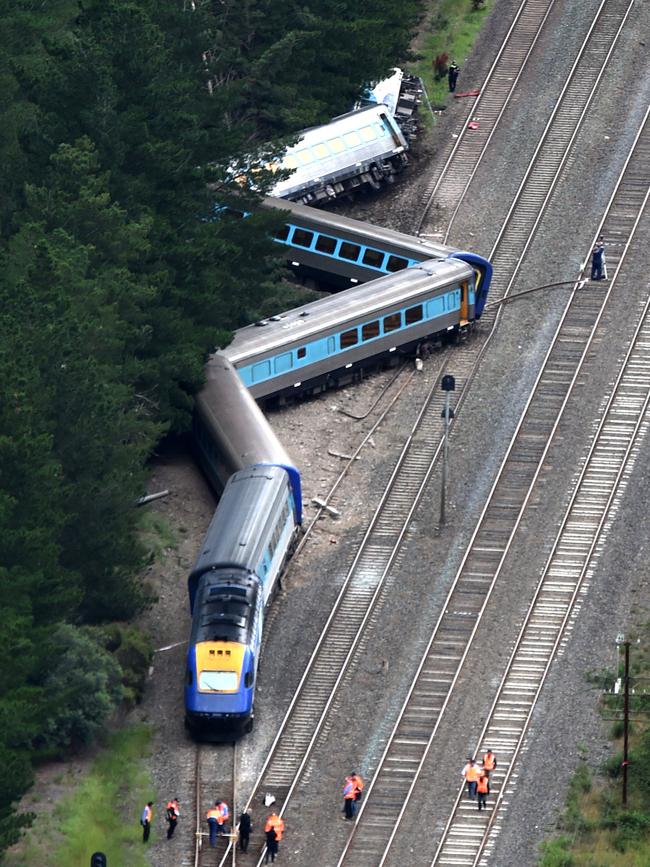
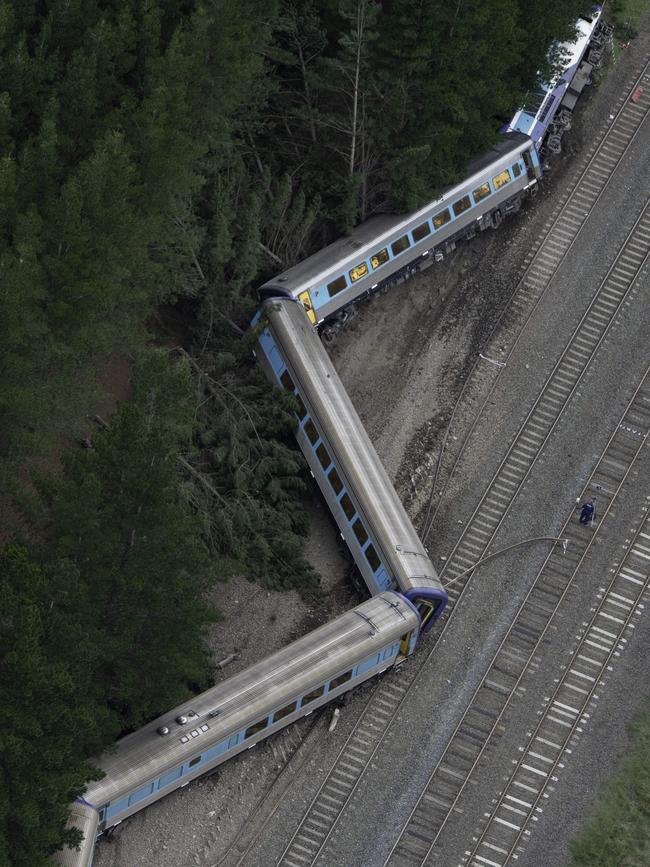
Programmed chief executive and managing director Glenn Thompson said on Monday night: “We are working with all relevant authorities to help understand the details of the incident and supporting Sam’s family during this devastating time.”
Investigators will draw from considerable evidence of what occurred in the train cockpit and whether the driver responded to any advice, or whether there was confusion about what to do.
It is believed the train would normally have been in radio contact with ARTC controllers in Junee, NSW, and it is standard practice for conversations to be recorded, providing investigators with an effective black box chronicling the events leading up to the crash.
Rail, Tram and Bus Union NSW secretary Alex Claassens is calling for uniform rules mandating that trains slow to a minimum speed when there are doubts about signalling.
He also said there would be data showing every major decision the driver made on the journey, including acceleration, braking and even blowing of the horn. “It’s all recorded,’’ he said.
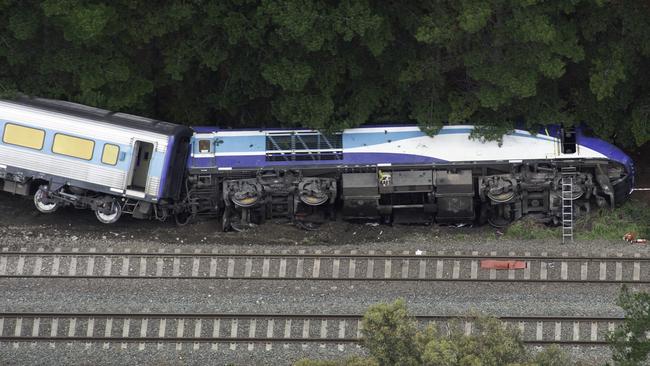
The deaths occurred when the XPT train was transitioning at high speed to a passing loop at Wallan, where the crew had allegedly been told to slow to a maximum of 15km/h; instead the train hit the points at potentially more than 80km/h.
Several sources have said Mr Meintanis, 49, from Castlemaine in central Victoria, was aware of the issues at Wallan, which were caused by a broken signalling box that had caught fire at the beginning of the month.
The audio recording of conversations between the ARTC and the train will provide the definitive explanation of events leading to the crash.
The ARTC is expected to face scrutiny about the state of some of the tracks. Industry sources said there were significant questions about the track between Albury and Melbourne. There have been at least two derailments on the Albury-to-Melbourne corridor in the past year.
The train’s driver was identified as 54-year-old Canberra man John Kennedy, who had extensive experience across the NSW train industry. Mr Meintanis is believed to have boarded the train shortly before it crashed.
Comment has been sought from the ARTC.

